

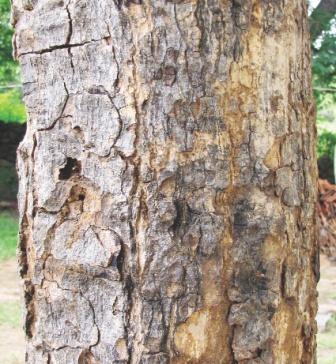
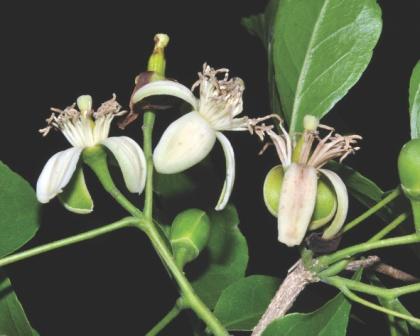
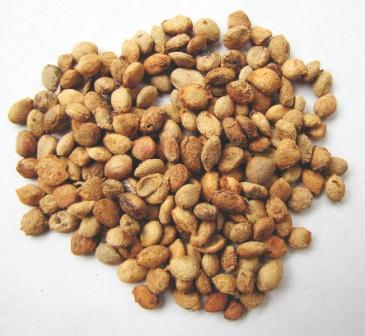
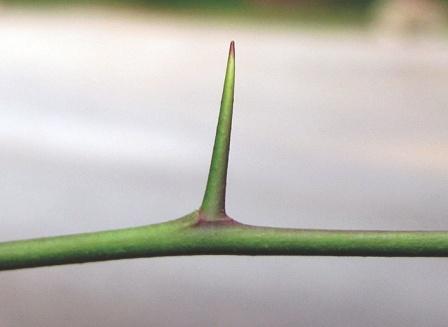
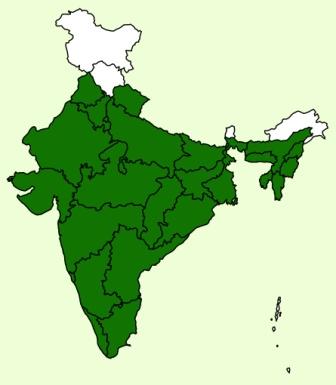
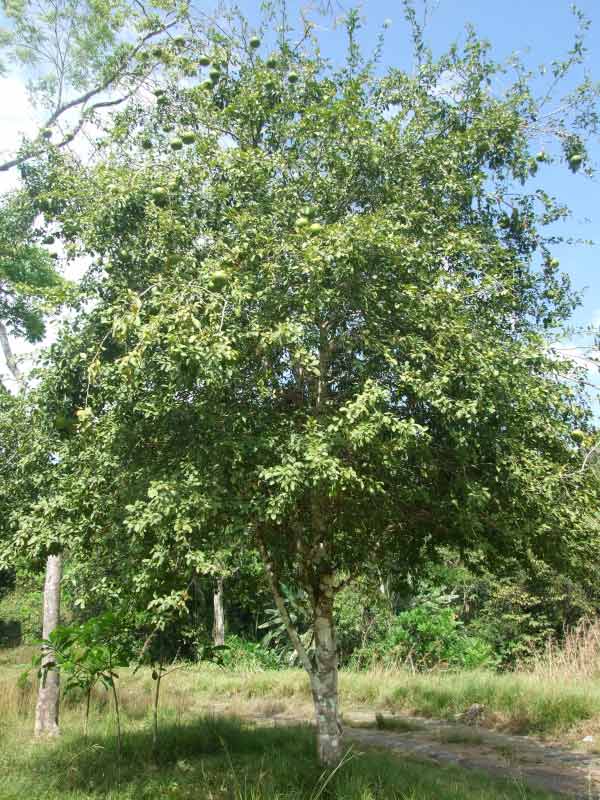
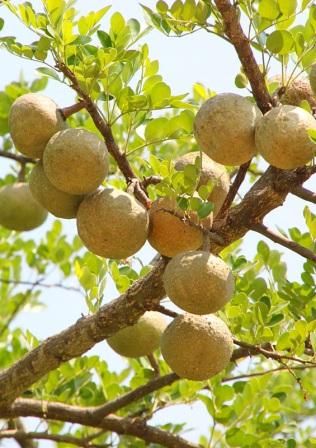
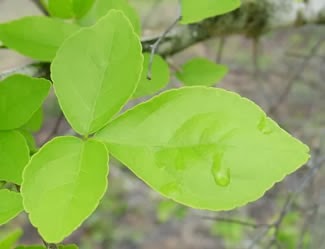
• The Bael fruit tree is slow-growing tree of medium size.• The bark is pale brown or grayish, smooth.• Leaves dark green and completely smooth• The flowers are 1.5 to 2 cm, pale green or yellowish, sweetly scented, bisexual.• Fruit slightly pear-shaped with a thick hard rind with woody shell.• The woody shell is smooth and green, gray until it is fully ripe when it turns yellow. Inside are 8 to 15 sections filled with aromatic orange pulp, each section with 6-10 seeds.
• The seeds do not have dormancy, hence fresh seeds are shown in June in a well prepared bed mixed with properly decomposed farmyard manure and sand. Seeds germinate within 3 weeks.
• The seedlings are not true to type and exhibit a lot of variability. • Essential to raise seedlings for rootstock. • These seedlings are ready for budding after a year. • The scion shoots should be selected from mother plants which are prolific bearers. • Patch budding is ideal method with a 90% success rate.• June –July is ideal time for budding.• The seedlings become ready for transplanting 7 weeks after sowing.
• Bael plants should be planted at a distance of 8m x 8m (Budded plants) or 10m x 10m (seedlings). • Pits of 90cm x 90cm x90cm size are dug and filled with a mixture of top soil + 25 kg farmyard manure and 50 g gamma BHC up to a level of 6 cm from the ground level. • Irrigate the pits to let the soil settle down. February-March or July-August is the right time for planting.
• Keep the plantation weed –free and water logging. • Legume crops can be taken as intercrops in bael plantation during the rainy season.• Fruit cracking and fruit drop are two important physiological disorders found in bael. • These can be managed by providing good irrigation facility, making wind breaks around the orchard and by spraying borax @ 0.1% twice at full bloom and after fruit set.
The field after plantation should be irrigated periodically as and when required weekly or fortnightly.
• Budded and grafted plants start fruiting after 4-5 years of planting whereas, seedlings after 8-10 years of planting. • Bael Fruit takes around 8-10 months to mature and 10-12 months for ripening after fruit set
• An average 150-200 fruits under good management practices. • The fruits can be stored at room temperature for two weeks. • At 10oC, it can be kept up to three months.
• The wood is strongly aromatic when freshly cut.• It is best utilized for carving, small-scale turnery,tool and knife handles, pestles and combs, taking a fine polish.• Scented essential oil is extracted from the leaves.
Fodder: The leaves and twigs are lopped for fodderGum or resin: The gum enveloping the seeds is most abundant in wild fruits and especially when they are unripe. It is commonly used as a household glue and is employed as an adhesive by jewelers.
1.696 tC/tree